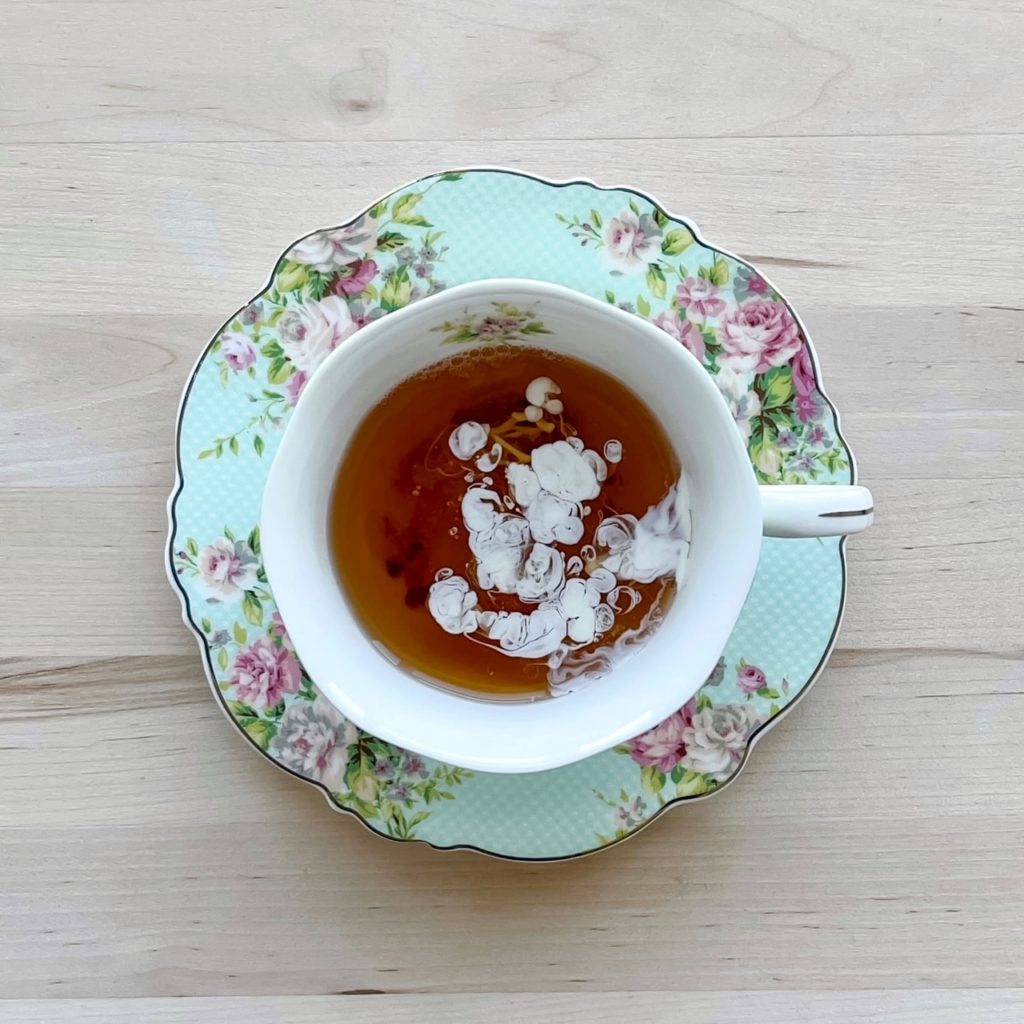
I randomly stumbled on a captivating video of the East Frisian tea ceremony and had to learn more!
I came across this method of brewing tea through Tea Infusiast or Traci, who runs a tea blog. I was mesmerized by her video brewing it. I could hear the quiet crackling of the sugar as the hot deep reddish-brown liquor hit it. I watched as she added the cream to the cup and how it slowly rose to the top and formed “clouds.”
Brief History
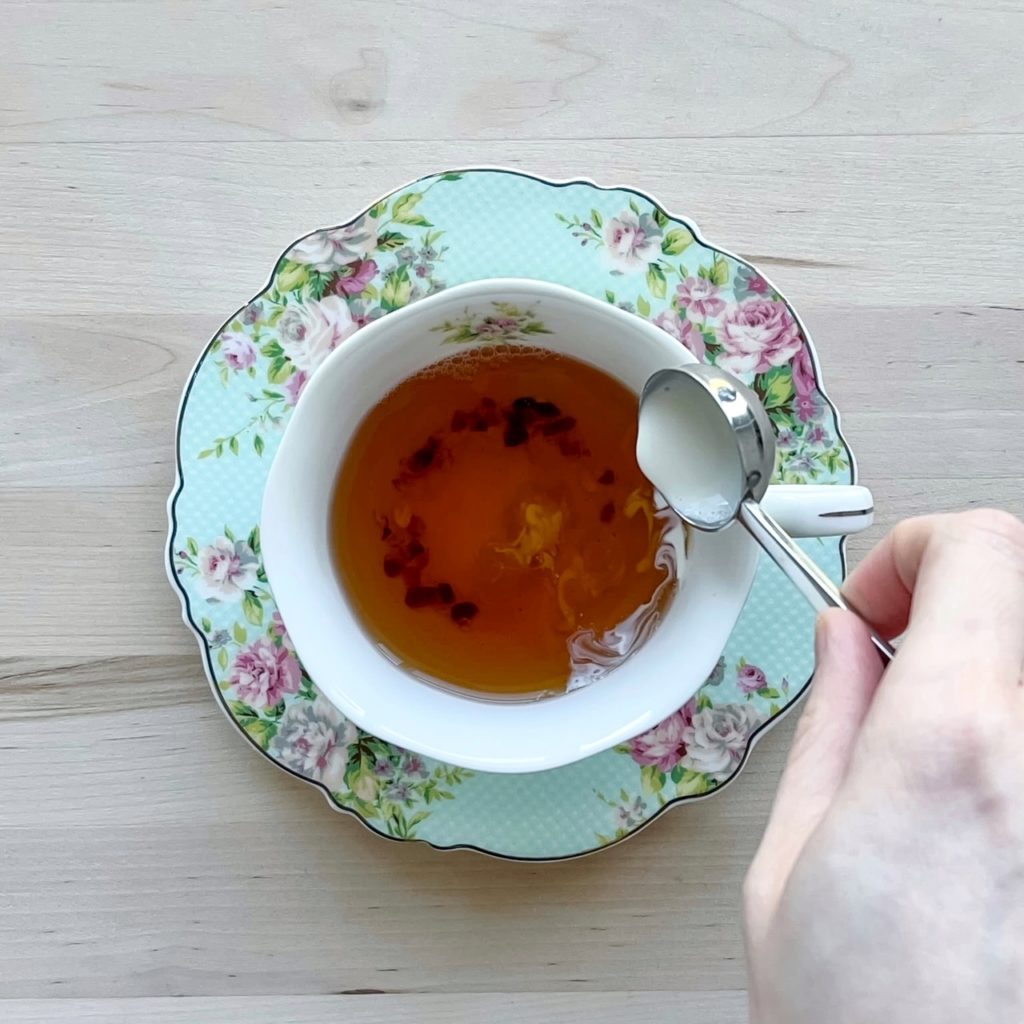
East Frisian, also known as East Friesland or Ostfriesland in German, is located in the northwest corner of Germany, close to the Netherlands. In 2016, the East Frisian Tea Ceremony was granted UNESCO Cultural Heritage status under the categories of social practices & rituals and festive events.
As stated on the UNESCO website, the East Frisian region has been drinking tea for 300 years and the culture has been passed down from generation to generation. Families have preferred tea blends which are typically made mostly of Assam tea. The tea is served in teaware with rose decor or East Frisian Rose. There are several tea companies in the East Frisian region due to high consumption and the tea ceremony is even showcased in a tea museum in the region!
Tea Ceremony
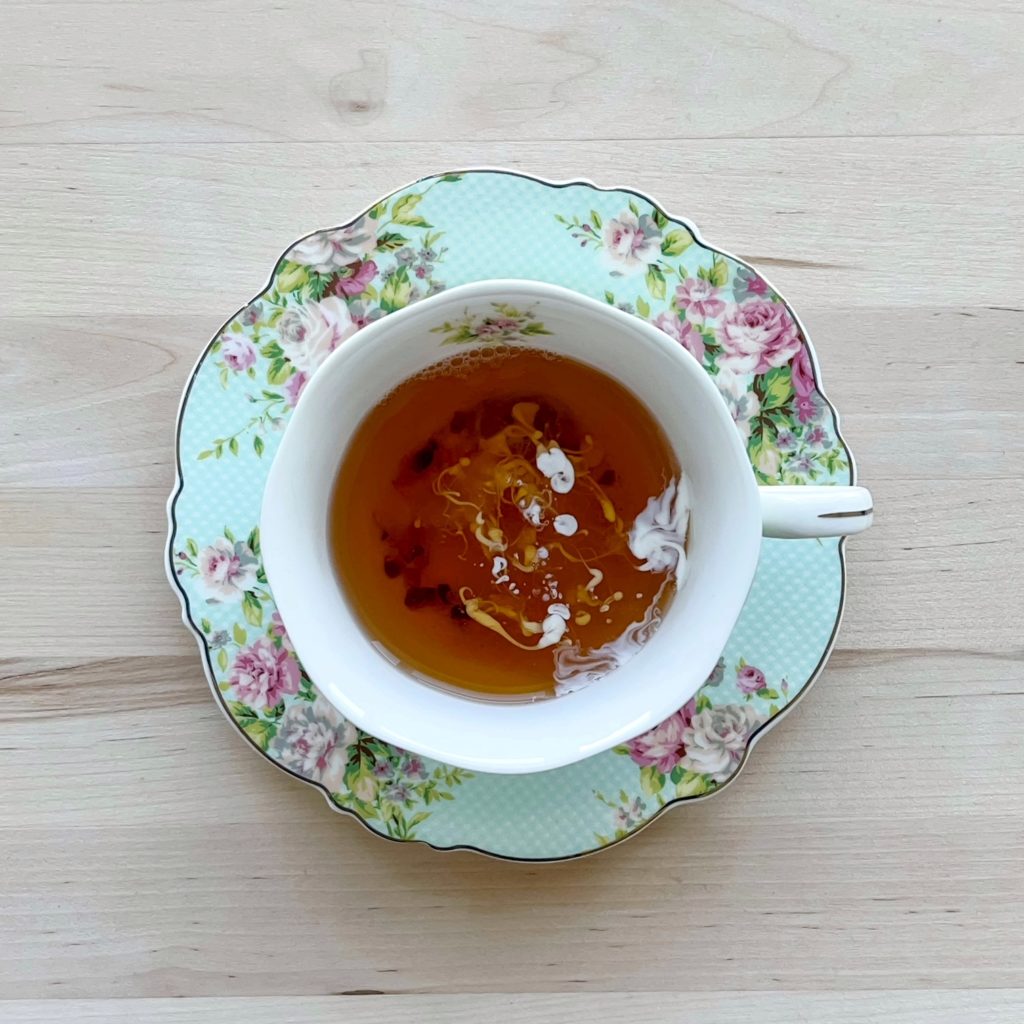
A few key elements of the East Frisian are:
- Kluntje – rock sugar added to the bottom of the cup
- rohmlepel – a small flat spoon/ladle used to pour the cream
- Wulkje – cloud-like structure that forms from the cream
- East Frisian Blue/East Frisian Rose – decorative motifs on the china teaware
When researching the ceremony, I also came across fellow tea blogger’s Tea Happiness or Sara,’s post. In it, she mentioned the book, The True History of Tea by Victor H. Mair & Erling Hoh, which was useful read. Since every source had slightly different steps for the ceremony, I appreciated Mair and Hoh’s succinct summary of the ceremony:
“In the East Frisian Tea Ceremony, a special white China with an East Frisian blue decoration is used. First, two pieces of kluntje are placed in each cup. The hot black tea is served, and cream or milk added with a special spoon called a rohmlöppel. As the cream sinks it to the bottom, it looks like clouds, or wulkje. The most important thing to remember is to not stir the cup. In this manner, the sugar remains at the bottom, and the best is saved for last.”
– The True History of Tea by Victor H. Mair & Erling Hoh
Trying it Myself
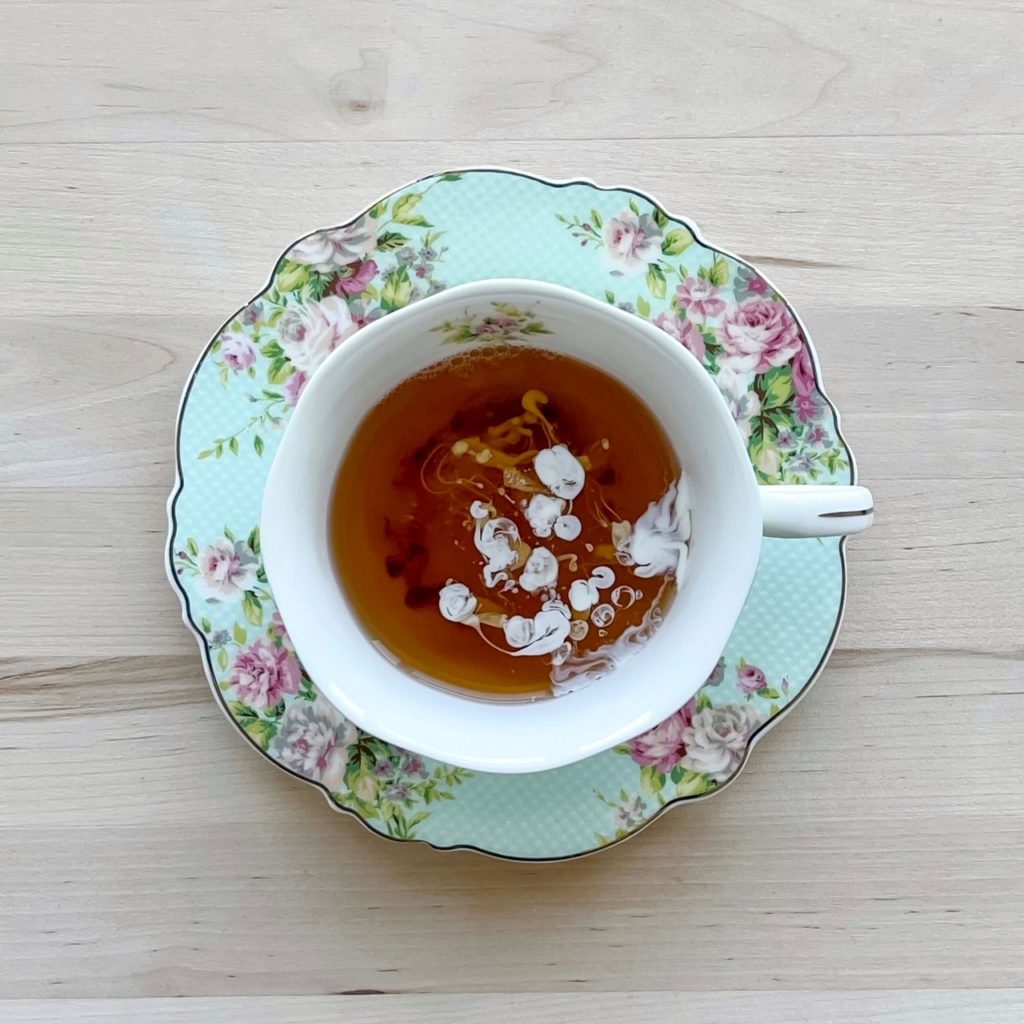
After watching multiple videos and reading about the ceremony, I had to try it myself! I purchased a set from The Tea Haus, which included two tea blends and rock sugar. The company’s website had information and steps for the ceremony. Below are the steps I used based on compiling various sources together:
- Brew the black tea strong as cream will be added.
- Add kluntje (rock sugar) to the bottom of the cup.
- Pour the tea into the cup.
- Add cream along the cup’s rim in a counterclockwise motion with rohmlepel (or a small spoon).
- Do not stir the tea as this will help maintain the distinctive layers.
- Sip the tea and enjoy the various layers.
As the set came with smaller rock sugar pieces, I added a generous pinch of sugar to the bottom of my cup. Since the sugar pieces were small, the crackling sound was less evident than in some of the videos I saw, such as Traci’s. I did not have a rohmlepel (which looks like a small flat ladle), so I used a teaspoon and 30% lactose-free cream.
The first few times I tried, I poured the cream too far out and it ended up covering the top of the cup. I also realized after taking my photos/video that I should have poured the cream inward toward the rim of the cup so that the cream would follow the shape of the cup and sink to the bottom and not float at the top.
I found once I figured out how to better pour the cream, it was relaxing to watch the wulkje form. Tastewise, I also enjoyed the different layers. When you first sip from the cup, the cream coats the tongue which enhances the black tea flavour. The cream slowly dissipates as you sip and a stronger black tea taste emerges. As you reach the bottom third of the cup, it slowly becomes sweeter and sweeter until the last sip ends in a burst of sweetness.
Overall
I had fun learning about the ceremony and tasting the tea! I would suggest this to anyone who enjoys adding sugar and cream to your black tea! Remember, the tea blend normally has Assam as a main ingredient. If anyone is familiar with this ceremony, please let me know if I got something wrong! I made also a video of the brewing the tea because I was inspired by Traci’s!
Liked this post about East Frisian Tea Ceremony? Pin it!
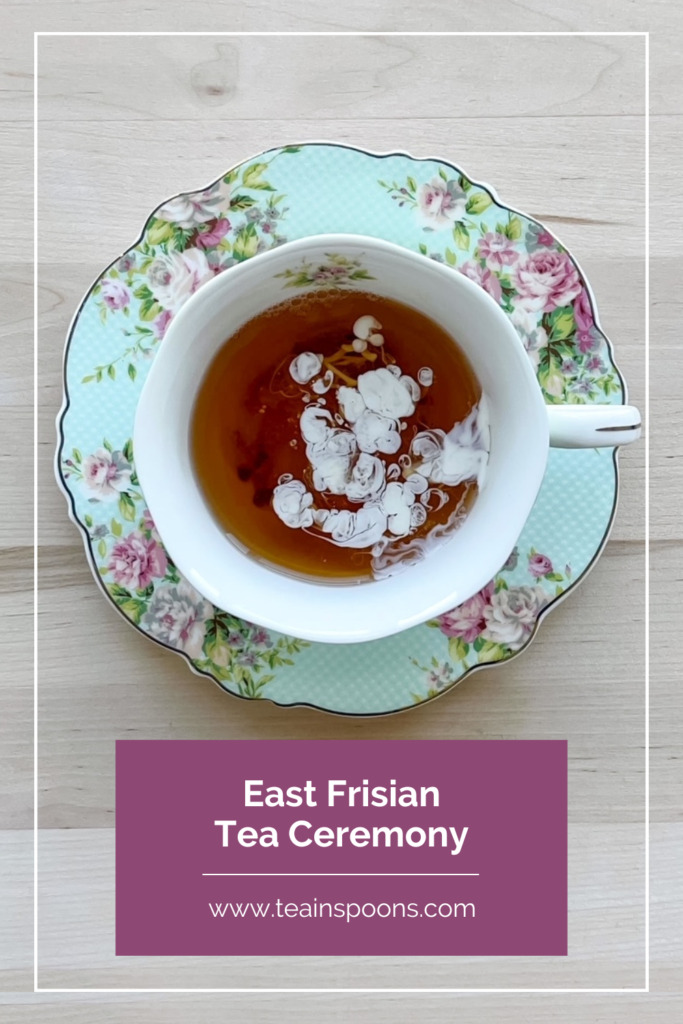

2 comments
I’m just getting into the East Frisian Tea Ceremony myself. I enjoyed your post and particularly the video.
I am glad you liked the vid! Def hoping to learn more about it too! 🙂